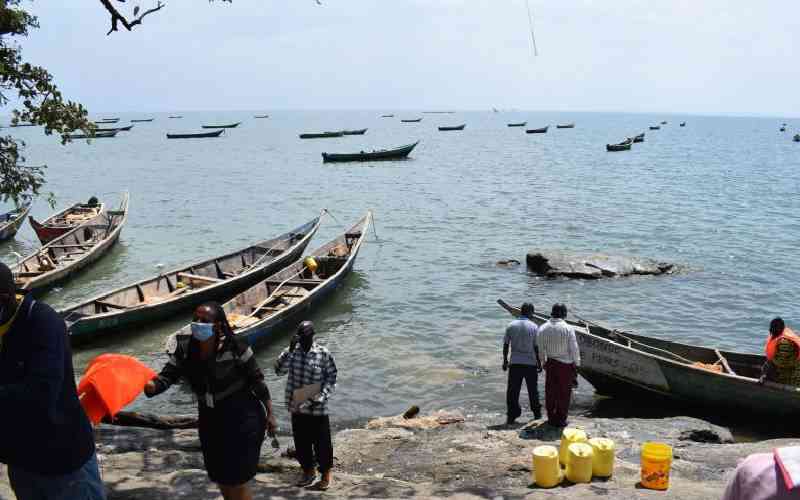 |
|
The digital pen (left) used to collect data. It is used alongside a GPS enabled mobile phone. (Photo:Courtesy) |
By Judy Nguta (@JudyNguta)
Nairobi, Kenya: The magnitude of post-harvest losses (PHL) in the fish supply chain could drop drastically if new technology aimed at assessing the cause of the wastage is implemented.
Through the technology, information on the challenges faced by fishermen and fish mongers would be made available through a central database that interested parties can access.
These stakeholders include the department of Fisheries, fish processors, policy makers, NGOs, traders and researchers. It is expected that they will use the data to come up with ways of reducing PHL once they understand what its underlying causes are.
Through the European Union-funded Smartfish programme, the Food and Agriculture Organisation has selected nine African countries — among them Kenya, Uganda, Tanzania, South Sudan, Rwanda, Burundi and Madagascar — as targets for the project.
Kenya has, however, been selected as the pilot country due to the availability of PHL and other relevant data.
The technology uses a digital pen and mobile phone for data collection. The pen comprises a bluetooth transceiver, camera, battery, memory, processor and ink cartridge.
Each pen has a unique ID and is paired to a mobile phone that has bluetooth and is GPS-enabled.
To collect the data, the assessor is required interview individuals or groups. He or she then fills a form (Post-Harvest Fish Loss Assessment Form) using the digital pen. The form has a “start” mark at the top that is ticked at the beginning of the interview. Once the assessor is done, the “send” mark at the bottom of the form is ticked and the data collected is sent to the mobile phone through a bluetooth connection.
The data is then sent from the phone to a central database.
The data location is captured through the mobile phone’s GPS and fed into the database system for referencing.
The pen captures the data being entered into the form by sensing movement. Once you press on a special type of paper to write, the pen’s components are activated.
The pilot project has already started in fishing sites around Lake Victoria and the Indian Ocean.
“I had to personally go to the sites (Kisumu and Mombasa) to train the assessors on how to use the technology. It is very easy to learn and it is so far a success,” said Mr Jackson Kang’ethe, a regional officer with FAO.
However, only four people — two in Kisumu and two in Mombasa — have so far been adequately trained and authorised to collect the data.
Stay informed. Subscribe to our newsletter
The data is collected through Beach Management Units (BMU), which every fisherman is a member of.
“Initially, the data collection was very hectic as we had to fill the form and later key in the data onto the mobile phone for transmission to the database, but with the introduction of the digital pen, the work is very easy and efficient,” said Mr Edward Oremo, the Homabay County BMU chairman.
According to Mr Albert Mwangi, the principal fisheries officer at the State department, the project is ready for implementation and should be rolled out immediately it receives adequate funding.
An entire system would cost approximately $300,000 (Sh25.9 million) to set up. The digital pen costs $300 (Sh25,920), exclusive of licensing and back-end costs.
[email protected]
 The Standard Group Plc is a
multi-media organization with investments in media platforms spanning newspaper
print operations, television, radio broadcasting, digital and online services. The
Standard Group is recognized as a leading multi-media house in Kenya with a key
influence in matters of national and international interest.
The Standard Group Plc is a
multi-media organization with investments in media platforms spanning newspaper
print operations, television, radio broadcasting, digital and online services. The
Standard Group is recognized as a leading multi-media house in Kenya with a key
influence in matters of national and international interest.
 The Standard Group Plc is a
multi-media organization with investments in media platforms spanning newspaper
print operations, television, radio broadcasting, digital and online services. The
Standard Group is recognized as a leading multi-media house in Kenya with a key
influence in matters of national and international interest.
The Standard Group Plc is a
multi-media organization with investments in media platforms spanning newspaper
print operations, television, radio broadcasting, digital and online services. The
Standard Group is recognized as a leading multi-media house in Kenya with a key
influence in matters of national and international interest.






